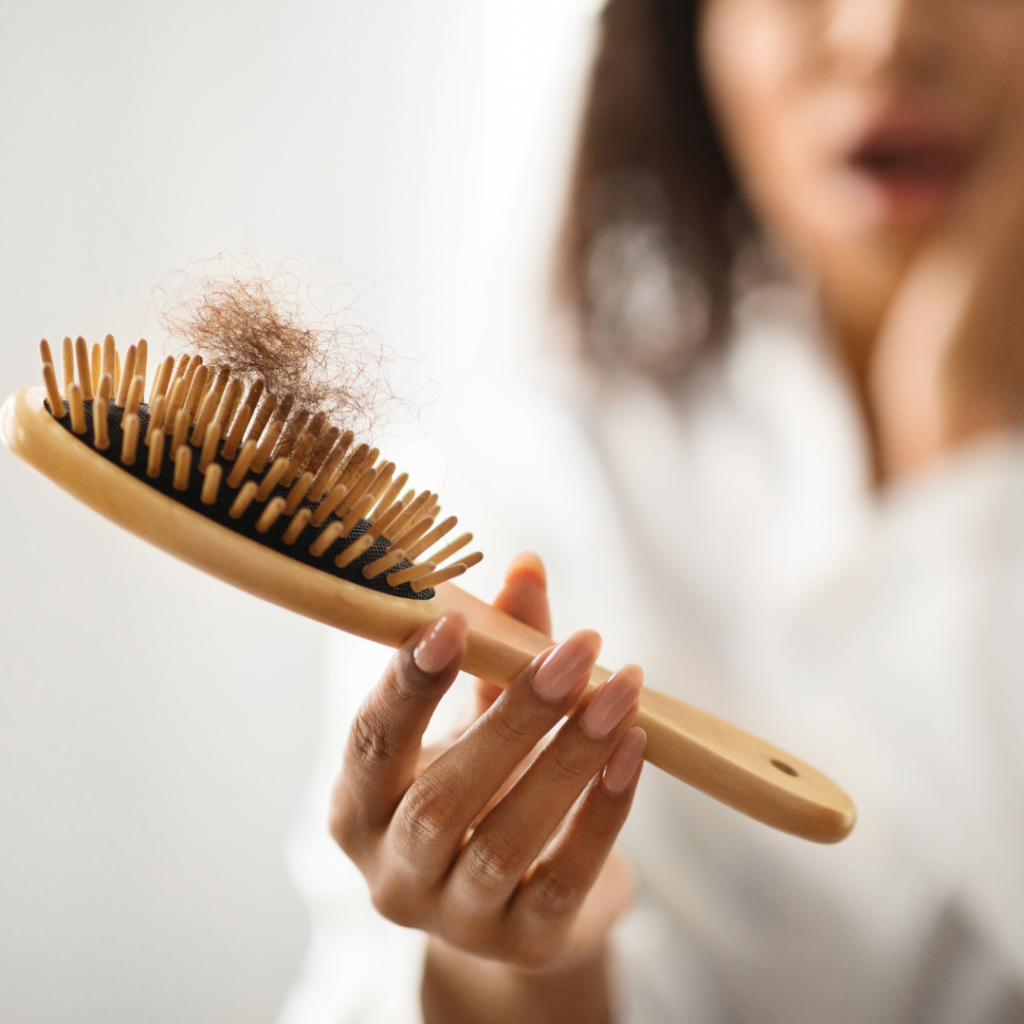Tricoblog
TUTTE LE INFORMAZIONI DI CUI AVEVI BISOGNO SUL DIRADAMENTO
POST-MENOPAUSA
Scopri come evitare i danni al cuoio capelluto!
Index
After menopause, hormonal changes play a crucial role in hair health. The reduction in estrogen and the relative increase in androgens negatively affect the hair growth cycle, leading to progressive thinning and increased fragility of the hair: this hormonal imbalance alters the hair growth phase shortening it, while prolonging the falling phase, triggering a more noticeable loss of hair.
Female androgenetic alopecia is a common condition that affects many women, especially during and after menopause: the ‘ incidence of female androgenetic alopecia increases with age, affecting up to 50% of post-menopausal women.
Ma quali sono le altre cause del diradamento dopo la menopausa?
In addition to hormonal variations, genetic predisposition plays a role; some women are physiologically more sensitive to hormonal changes, and this sensitivity results in follicles producing hair that is increasingly thinner and weaker, even to the point of reducing drastically the overall volume.
Further complicating the situation are other factors such as oxidative stress, which damages follicle cells, and nutritional deficiencies, which with advancing age are often due to reduced absorption of essential vitamins and minerals.
All of these elements combine to make post-menopausal hair density loss a widespread, but not inevitable, problem: identifying the early signs and intervening with targeted treatments, specific supplements, and a proper scalp care routine can make all the difference in preserving the health and vitality of the hair.
Ecco 3 segnali da non sottovalutare!
- Reduction in hair density.: Diffuse thinning in the central area of the scalp is often the first sign.
- Increased brittleness and thinning: Hair becomes thinner and more brittle, breaking easily.
- Increased shedding: More substantial hair loss during washing or brushing may indicate an ongoing problem.
Tipi di diradamento in post-menopausa
Female androgenetic alopecia mainly manifests itself in various ways; in the case of thinning there are two main types:
- Type Ludwig: Thinning uniformly affects the top of the head, causing widening of the central line without receding frontal hairline.
- Type Hamilton: Characterized by a frontal or frontoparietal recession, similar to the male pattern.
Sometimes, instead of thinning, a massive premature fall occurs as in the case of chronic Telogen Effluvium.
Come intervenire?
Postmenopausal female alopecia is a complex phenomenon that requires a multi-pronged approach to be managed effectively. With the decline in estrogen and the related increase in androgens, the hair growth cycle undergoes alterations that lead to a progressive thinning. To counteract this process, it is essential to intervene with Targeted treatments that act on multiple levels.
The application of lotions and specific serums can stimulate the follicle and slow down the fall, while adequate supplementation nutritional with vitamins, minerals, and antioxidants helps support hair health from within. In some cases, your doctor may consider hormone or herbal therapies to rebalance the effects of menopause on hair.
Similarly, proper cleansing with shampoos gentle and moisturizing helps to maintain a healthy environment for hair growth.
Finally, a balanced lifestyle, including a diet rich in antioxidants and strategies to reduce stress, can make a difference in preserving the quality of hair. Taking early action and adopting a combined strategy is the key to combating thinning and maintaining healthy hair even after menopause.
Condividi l'articolo sui tuoi social!
Stay up to date*, sign up for our Newsletter to receive every article on your email!
Potrebbe interessarti anche...
-
 09 Jun 2025THE ESSENTIAL GUIDE TO PROTECTING YOUR HAIR DURING THE SUMMER!
09 Jun 2025THE ESSENTIAL GUIDE TO PROTECTING YOUR HAIR DURING THE SUMMER! -
 11 Apr 2025HOW TO RECOGNIZE A BIOTIN DEFICIENCY
11 Apr 2025HOW TO RECOGNIZE A BIOTIN DEFICIENCY -
 28 Mar 2025HOW TO DISTINGUISH SEASONAL FALL FROM OTHER FORMS OF ALOPECIA
28 Mar 2025HOW TO DISTINGUISH SEASONAL FALL FROM OTHER FORMS OF ALOPECIA -
 14 Mar 2025ALL THE INFORMATION YOU NEEDED ABOUT POSTMENOPAUSAL THINNING
14 Mar 2025ALL THE INFORMATION YOU NEEDED ABOUT POSTMENOPAUSAL THINNING -
 28 Feb 2025FIND OUT HOW TO RECOGNIZE THE EARLY SIGNS OF FEMALE ALOPECIA!
28 Feb 2025FIND OUT HOW TO RECOGNIZE THE EARLY SIGNS OF FEMALE ALOPECIA!


